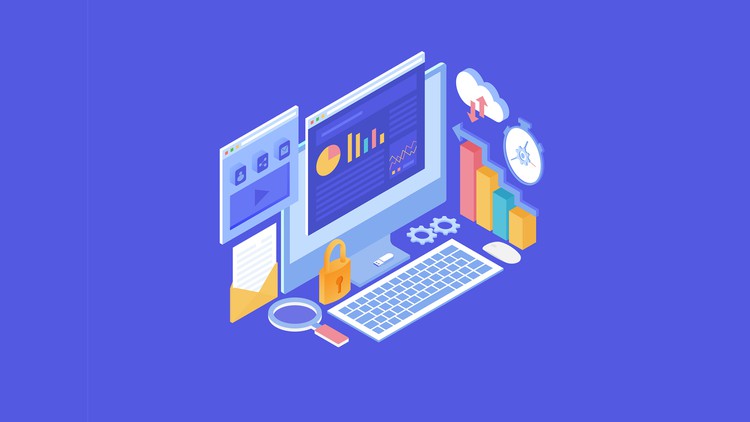
Introduction to PySimpleGUI
What you will learn
Make a GUI (desktop or web) with Python
A simple way to make desktop apps
Interacting with your GUI in Python
Theming your GUI
Basics of GUI app development
Description
This course teaches you how you can quickly create desktop apps with Python. The content makes this easy: you don’t have to be an expert in PyQt, Tkinter, wxPython or the web: instead you can easily switch between all of them.
If you want to start with creating desktop apps in Python and it all seems overwhelming, this is an easy course to get started with programming desktop apps in Python
Note➛ Make sure your 𝐔𝐝𝐞𝐦𝐲 cart has only this course you're going to enroll it now, Remove all other courses from the 𝐔𝐝𝐞𝐦𝐲 cart before Enrolling!
English
language
Content
Add-On Information:
- Demystify GUI Development: Uncover how PySimpleGUI simplifies creating graphical interfaces, making complex development accessible and enjoyable for all Python enthusiasts, regardless of prior GUI experience.
- Grasp PySimpleGUI’s Abstraction Power: Understand how it elegantly wraps core GUI frameworks like Tkinter and Qt, allowing you to build robust apps without delving into their low-level complexities.
- Rapidly Design Intuitive UIs: Learn techniques for quickly laying out visual components—from basic inputs to complex displays—enabling swift prototyping and iterative design cycles.
- Master Event-Driven Programming: Comprehend the essential event loop and callback mechanisms, ensuring your GUI responds dynamically and interactively to all user actions.
- Leverage a Rich Widget Library: Explore and effectively utilize a comprehensive collection of pre-built GUI elements, including text, input boxes, sliders, checkboxes, and progress bars, to construct feature-rich interfaces.
- Seamlessly Integrate Front-End and Back-End: Develop skills to connect your GUI’s visual components with your Python logic, processing user input and displaying dynamic data directly from the interface.
- Implement Robust Data Validation: Apply strategies for validating user inputs within your GUI, preventing errors, providing clear feedback, and building more reliable applications.
- Explore Advanced Layout Management: Create sophisticated and adaptive layouts using rows, columns, frames, and custom sizing, ensuring your applications look polished on any screen.
- Prepare Applications for Distribution: Understand the crucial steps to transform your Python script into a standalone executable, making your GUI apps easily shareable and deployable to any user.
- Develop Cross-Platform Solutions: Appreciate PySimpleGUI’s ability to create applications that run consistently across Windows, macOS, and Linux, significantly broadening your project’s reach.
- PROS:
- Accelerated Development: Drastically reduce GUI build time, allowing quicker iteration, testing, and deployment of your creative application ideas.
- Exceptional Readability: Benefit from PySimpleGUI’s intuitive API, leading to clean, easy-to-understand code that is simple to debug and maintain.
- Empowering for All Skill Levels: Provides a gentle learning curve for beginners while offering powerful, efficient tools for experts to rapidly prototype complex applications.
- CONS:
- Potential for Underlying Framework Dependencies: For highly specific or deep-level UI customizations, a foundational understanding of the wrapped backends (Tkinter, Qt) might occasionally be necessary, despite PySimpleGUI’s abstraction.
Introduction
Introduction
Introduction notes
Creating a GUI Window
Switch between desktop/web app
Making an app
Add Widgets
Get Text Input
Widgets Overview
Themes
Themes
Custom Theme